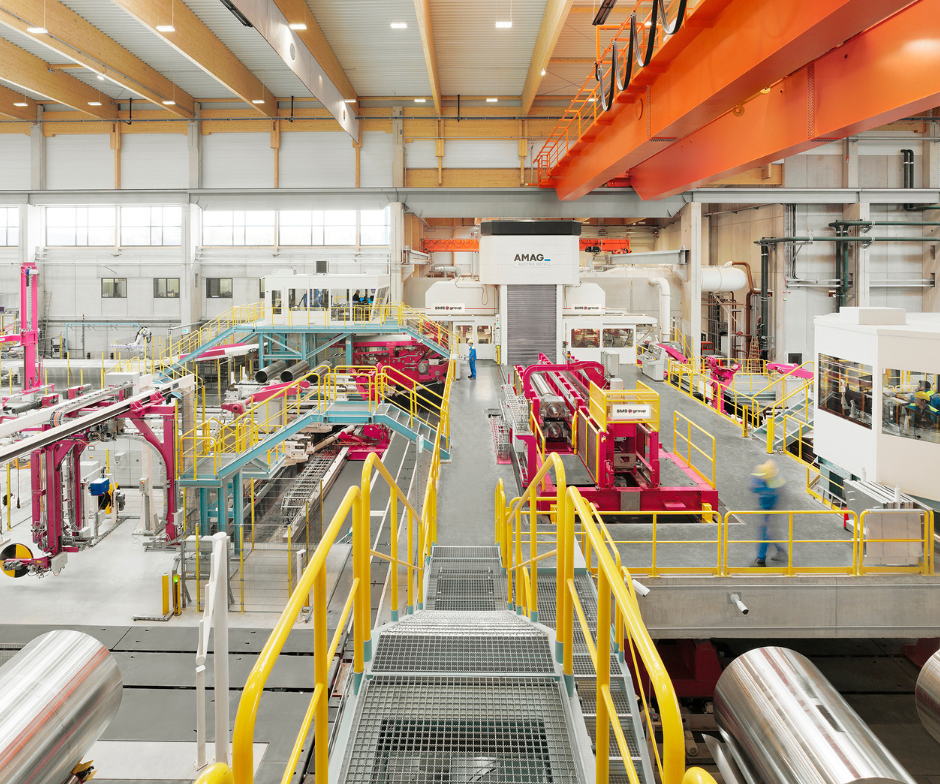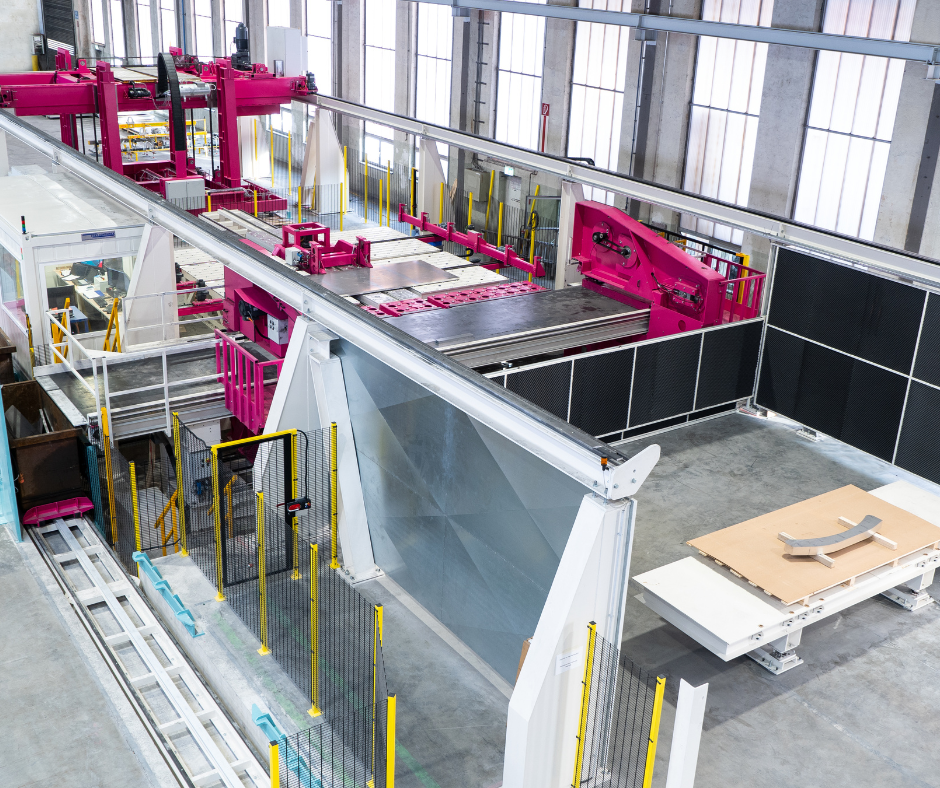How it all began
AMAG's aviation success story began in the mid 90's of the last century, when the Ranshofen aluminium rolling mill - the predecessor of today's AMAG rolling - first received enquiries from aircraft manufacturers.
The production spectrum in terms of alloys and dimensions was still very limited at that time. It was impossible to even think about offering plates and as a lack of suitable aerospace-approved annealing furnaces, sheets or coils could only be offered in hard-rolled or soft-rolled temper. Beyond that, the exceedingly high quality requirements of aerospace suppliers also meant breaking new grounds. Despite this, or precisely because of it, the "challenge of aviation" was tackled with great commitment and by the end of the decade AMAG had achieved a number of fundamental approvals for sheet metal.
With a strong tailwind into the new millennium
When the founding of Airbus at the beginning of the 2000s ended the long-standing monopoly of American manufacturers of commercial widebody aircraft and the global economic interdependencies were strengthened by the incredible rise of the Asian economic area, it became clear, that the suppliers of rolled products for aerospace applications would soon no longer be able to keep pace with the demand.
AMAG rolling seized the opportunity and thanks to its existing wealth of experience and with the support of the OEMs AMAG was able to extend both the product portfolio and its capacities - and all this at a remarkable pace for a newcomer! The basis for this was the signing of a multi-year framework agreement with Airbus and the associated investment in a modern plate centre with a horizontal tempering furnace, plate stretcher and the associated testing facilities. Finally, towards the end of 2005, the first aviation sheet (alloy 7175) which was completely manufactured in Ranshofen, left the factory - perhaps the most important milestone in AMAG's aviation success story. It did not take long for AMAG's rapid development in the plate sector to attract the attention of Boeing and other OEMs. By 2010, within just five years of the first delivery, AMAG was qualified for all main plate specifications of the three leading aircraft manufacturers (Airbus, Boeing, Embraer).
IPO and expansion projects
After the financial crisis in 2008, the aviation market picked up again at the beginning of the 2010s. It quickly became clear that the capacities and production capabilities installed in Ranshofen across the entire value chain, would soon no longer allow for further growth.
With the IPO of AMAG in April 2011, the cornerstone for the expansion of the plant was laid eventually. The central element was a new hot rolling mill with adjoining plate production.
As anticipated, AMAG's new production possibilities were appreciated by customers. This resulted, among other things, in the largest aerospace order in the company's history, a multi-year contract with Airbus for the supply of plates and sheets in the expanded feasible portfolio. Simultaneously with the opening of the new hot rolling mill, further expansion was initiated. This time in the form of a cold rolling mill with a continuous heat treatment furnace for wide outer skin sheets.
New ways
A product spectrum as broad as possible in terms of qualifications and dimensions is certainly an advantage in order to have long term success as a rolling mill in the aviation business. The sharp increase in global air traffic and the associated costing issues on the OEMs, catapulted aerospace manufacturers in the mid-2010s to streamline their supply chains accordingly. One way of doing this was material savings at the beginning of the supply chain, i.e. the primary material. A common term for this is "buy-to-fly ratio".
The commissioning of a modern contour band saw at the end of 2018 was AMAG's prompt response to the new customer requirements. This was more than just another finishing plant. This investment gave AMAG a welcome opportunity to better integrate itself into the supply chain and also contributes from a sustainability point of view. It offers a valuable contribution to improving the CO2 balance due to transport savings and the direct recycling possibilities in the factory.
The COVID crisis acted as an accelerator for the trend towards vertical integration. In addition to the above mentioned expectations with regard to possible cost optimization, the OEMs now had to consider aspects such as availability and security of supply as crucial criteria. AMAG once again responded to the customers and in 2020 took a second step in the direction of increasing value added: the choice fell on a Bavarian specialist in the machining of aerospace structural components, which has since become AMAG components and supplies the most important OEMs and Tier1s in the aerospace industry.
AMAG components draws on over 60 years of know-how in the machining of highly complex and precise aerospace structural parts as well as assemblies.
AMAG once again responded to the customers and in 2020 took a second step in the direction of increasing value added: the choice fell on a Bavarian specialist in the machining of aerospace structural components, which has since become AMAG components and supplies the most important OEMs and Tier1s in the aerospace industry.
AMAG components draws on over 60 years of know-how in the machining of highly complex and precise aerospace structural parts as well as assemblies.
News and outlook
AMAG's latest contributions to the improvement of service for our aviation customers is the commissioning of the Smart Factory, a prototype for the fully automated testing of aerospace samples and a further artificial ageing furnace, which will further increase the capacity of heat-treatable plates.
Although AMAG's path in collecting new approvals and accreditations is still far from complete, we can today proudly call ourselves a global player in the aerospace supply industry. More so: through our pioneering role in sustainability issues and the unique combination of a rolling mill with a parts manufacturer, AMAG keeps up with the times and can look forward to the challenges of the future with great optimism.



![[Translate to English:] DIE ENTWICKLUNG ZUM GLOBAL PLAYER IN DER LUFTFAHRT.](/fileadmin/_processed_/6/8/csm_PMA1_4da77140e0.png)

